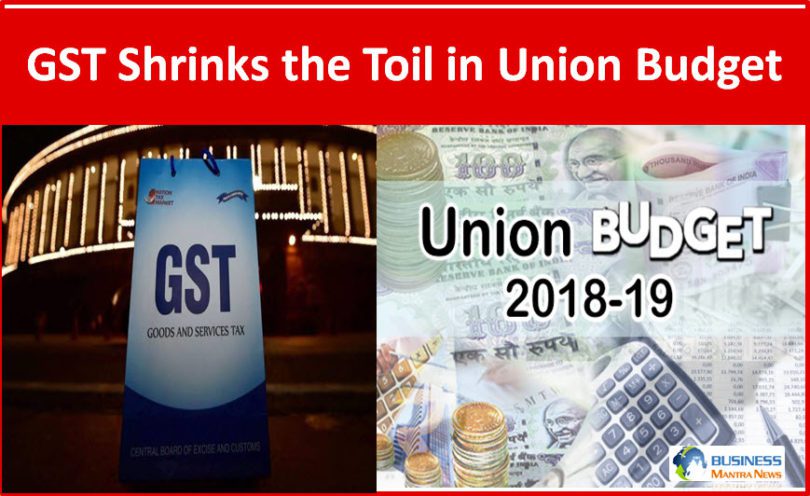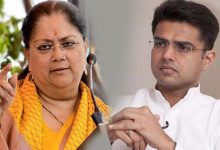Grandiose healthcare and higher MSP without allocation makes the Budget ineffectual. An analysis for Different Truths.
Finance Minister Arun Jaitley has attempted to do what he ought to have done long ago, precisely because he cannot ignore the sentiments of people, particularly the farmers, informal sectors and rural folk, who have been hit hard by severe distress, mainly because of one mindless move, demonetisation. An imperfect rollout of GST and demonetisation have rattled the farm and rural sectors, mainly dependent on the cash economy. Though there are some positives in the budget for the poor and middle-class, there are several negatives as well.
Taking the cue from the Pre-Budget Economic Survey, which had highlighted three areas of distress that needed to be addressed immediately, Jaitley rightly outlined the intent in the budget to uplift the sagging morale of farmers and rural poor in an election year but without making the necessary allocation. This meant there is yet another grand promise like putting Rs 15 lakh in the bank account of every poor family by getting back the black money stashed abroad. This promise was made by none other than Prime Minister Narendra Modi during the campaign for 2014 general elections and nothing much has happened on it, four years after the promise.
The three areas that Economic Survey stressed upon for reversing rural distress are agriculture, job creation, and education, which now needed unbridled attention. Jaitley rightly made his budget speech look like an election manifesto without spelling out how he is going to find the resources especially when there are already fiscal slippages. When one reads the fine print of the budget, the allocation to farm sector has been increased by mere 13 percent when there is a general increase of about 10-10.5 percent for other sectors. Jaitley has not spelled out how he is going to find the resources for providing 150 percent increase in Minimum Support Price that too to all crops in the forthcoming Kharif season.
A more grandiose intent proposed in the budget is the healthcare programme. This is a welcome development but the question is: does the government have the necessary resources? There is no allocation made in the budget and indications are that it may cost the exchequer at least Rs 1.5 lakh crore. Some six states already have a more modest scheme of providing up to Rs 1-2 lakh health cover for poor and this together cost various states put together Rs one lakh crore. Tamil Nadu was among the first state to start it in 2008 and it is working well because it already had a good hospital network in the state and now many government hospitals are benefitting because it gets them some money for insurance companies and this contributes to the upkeep of hospitals, hitherto pathetic because of inadequate government funding. But many of the North Indian states, particularly Uttar Pradesh and Bihar, do not have a good network of hospitals and government hospitals and primary healthcare centres are in very bad shape and hence implementing this health care scheme is going to be difficult. The hospital network had to be first improved in these states, which by itself requires huge resources and a long gestation time, perhaps several years.
The healthcare scheme, now come to be known as Modicare, just as Obamacare, may, therefore, take years to be rolled out fully as huge resources would have to be found even if states were to share part of the burden as proposed. Also, experience shows any central programme implemented in collaboration with states is tardy and the level of implementation and quality vary from state to state.
The rollout is, therefore, going to be difficult and it could lead to serious fiscal slippages that too at a time, as Economic Survey points out when the economy is showing robust growth and broad-based revival after a double whammy of demonetisation and implementation issues in the rollout of Goods and Services Tax.
Such mega plans for rural India are good if India has to shine for all but the question is: can it be implemented without glitches and spreading thin the scarce resources ahead of elections next year? The answer is a big NO.
Perhaps Jaitley had at the back of his mind the India Shining campaign of ruling NDA in 2004 led by Atal Bihari Vajpayee. The India shining campaign did not go well with rural India even though it had good support in urban India. The BJP party, therefore, got defeated in the general elections. So perhaps Modi, aware of this mistake of ignoring rural India, wanted to bring cheers to struggling Bharat during last year of his term after rural India was mauled by one bad economic decision, demonetisation. The recent Gujarat assembly elections and the more recent Rajasthan bye-elections to three seats are eye openers and it is the time the ruling party drew lessons. The farmers are no longer a mere pushover. They will see through unless the government makes an earnest effort to implement these grand schemes, which are not going to be easy. In fact, such schemes should have been announced in the first budget of the government four years ago so that they could have gradually implemented over the years instead of tokenism in an election year.
Jaitley’s health scheme to 10 crores below poverty families, which translate to 50 crore persons, is like UPA government’s food security programme ahead of the 2014 elections. The programme was announced without proper provisioning in the budget, for a whopping food subsidy of Rs 1.25 lakh crore. Rural people saw through the game and the UPA lost the elections. It would have been better if the Modi government had discussions with all stakeholders including states and created necessary infrastructure and resources before announcing such schemes. Perhaps it could have been a good election promise in the manifesto for 2019 elections as failure to implement in a short span of one year will cost the ruling party dearly in the elections. Former finance minister P Chidambaram is right in saying that Arvind Subramanian, the chief economic advisor, who authored the Economic Survey, is a good doctor as he has rightly flagged the ills of the economy but the Modi government seems to be a bad patient as it has failed to listen to the advice of the doctor.
Another significant measure in the budget is the impetus provided to the rural economy and farm distress, which would be a force multiplier for overall growth, likely to surge to 8 per cent. This would help India become the fastest growing emerging economy, now at $2.5 trillion and move two notches up in the coming months to overtake France and Britain. This would make India the fifth largest economy in the world.
The package provided to pump-prime MSMEs through better access to finance or lowering of the corporate tax rate to 25 per cent to companies having turnover up to Rs 250 crore would also help to spur both employment and growth in this vital segment of the economy. MSMEs account for nearly 40 per cent of manufacturing and 45 per cent of exports in the country. It employs many times more compared to large industries, which are increasingly becoming capital intensive. The stress on jobs in the budget will help generate meaningful employment going ahead. This will also help to solve the problem of disguised unemployment in the rural area.
Measures to boost rural livelihoods are a welcome development. Spending more on livelihood, agriculture and allied activities, and construction of rural infrastructure is perhaps implementable in the budget. The total amount to be spent by various ministries will be Rs.14.34 lakh crore, including extra-budgetary and non-budgetary resources of Rs.11.98 lakh crore. Apart from employment due to farming activities and self-employment, this expenditure will create employment of 321 crore person days, 3.17 lakh kilometers of rural roads, 51 lakh new rural houses, 1.88 crore toilets, and provide 1.75 crore new household electric connections besides boosting agricultural growth. Accordingly, the government substantially increased the allocation of National Rural Livelihood Mission to Rs. 5750 crore in 2018-19.
In sum, the script on rural India is good but lacks seriousness as there are no answers as to how the government is going to get the wherewithal for implementation.
K R Sudhaman
©IPA Service
Photos from the Internet
#Demonitisation #IndianGovernment #BudgetOfIndia #IndianEconomy #NotSoGoodBudget #IPA #DifferentTruths






 By
By
